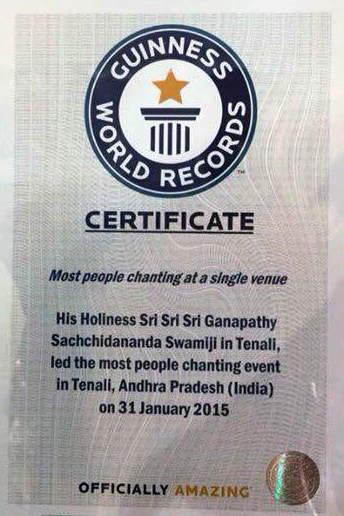Bhaja govindaṃ bhaja govindaṃ govindaṃ bhaja mūḍhamate |
Samprāpte sannihite kāle nahi nahi rakṣati ḍukrinkaraṇe || 1
O foolish, ignorant person (mūdha)! Revere and worship Lord Govinda! In that final hour at the time of death, this lesson on grammar that you seek to memorize will not come to your aid in any way!
Shankara Bhagawad-pādāchārya begins his teaching by addressing his disciple as ‘Mūdha-mate’. Commonly this refers to a foolish, stupid and idiotic person. However as per Vedanta, ‘mūdha’ is a person who is drowned in moha (illusion, delusion).
Moha means ‘infatuation’. This infatuation causes the person to believe that he is the physical body comprising of the senses (indriyas). Completely enveloped by this belief, he fails to recognize his true Self (atma). This is moha (illusion).
How can humans who are drowned in illusion be uplifted? What is the way out for them? Before this question is answered, it is essential to thoroughly understand what actually brings this ill/ bad condition in the person.
Our Upanishads authoritatively dictate that spiritual ignorance (avidya) or illusion (māya) are the cause behind this. Proponents of Vedanta have decisively stated that except the knowledge (vidya) that teaches about the Self (atma) all other forms of knowledge can be classified as avidya (ignorance). When seen from this angle, even the 6 Vedangas (auxiliary disciplines associated with the study and understanding of Vedas), which include grammar (vyakarana), can be termed as ‘avidya’.
That is why, in this hymn, Shankara Bhagawad-pādāchārya rebukes the person who is spending his entire time memorizing grammatical lessons (vyakarana sutras), thereby neglecting to focus on the nature of the Self (atma). This is a sheer waste of time. At the final hour of death, instead of thoughts about Supreme Lord, these lessons on grammar will come into memory.
If we want to achieve this end goal wherein thoughts of the Supreme Lord reign the mind at that final moment of death it is essential that recollection of divine names be incessantly practiced right from the time the physical body is young, energetic and healthy!
Just because this has been emphatically stated, one cannot completely discard all other forms of knowledge and scriptures terming them useless. All of these scriptures (shastras) should be used as tools to reach the Supreme Lord and with this mindset they can be studied. The goal should only be to understand the essence of the Self (atma tattva).
There was a man who never ever entertained any thought about God throughout his lifetime. At the time of his death all his relatives struggled to ensure that he would recite the Lord’s name in that final breath so that he could accumulate at least some merit (punya). All their efforts were of no use. As a final resort, they brought a scrub (used to wash vessels) and asked him to call out its name. They hoped he would say ‘nāra’ which would amount to at least half of Lord Nārāyaṇa’s name and thus he would accumulate slight punya with this effort. But the man said ‘peechu’ (a synonym) and died. This will be the state of those who do not practise recitation of God’s name right from their young days.
‘Bhaja Govindam’ means ‘understand/ reflect upon the true nature of that Supreme’. To ensure that this fact is driven firmly into the hardened human intellect, these words ‘Bhaja Govindam’ have been repeated thrice in the hymn.
The holy text ‘Srimad Bhagavatam’ states that when Krishna lifted up the Govardhan Mountain and offered protection to the cows, Lord Indra praised him as ‘Govinda’. ‘Govinda’ means ‘Lord of the cows’. In its true essence, ‘Go’ means ‘all living beings having prana (life force) in them’.
How did ‘Bhaja Govindam’ originate? Once Shankara Bhagawad-pādāchārya Swami was returning after bathing in the River Ganga when he happened to pass by a learned teacher who was trying to get his student learn by rote the grammatical lesson ‘ḍukrinkaraṇe’. The little boy was unable to recite this word perfectly and the teacher was unrelenting in his efforts. While this was going on, the pot of water which the teacher was holding fell down. The rolling pot created the sound ‘dukrin- karane, dukrin- karane’. It means that due to this relentless practice, even the water pot had picked up this lesson on grammar.
Seeing this, Shankara Bhagawad-pādāchārya swami was greatly moved. He was saddened that these human beings had completely forgotten to study about the nature of the Self and were instead struggling to fulfill only those activities that were essential for survival. Immediately he composed this hymn – bhaja govindaṃ bhaja govindaṃ govindaṃ bhaja mūḍhamate.
Let us now proceed to the other verses to understand the essence contained within this hymn.

